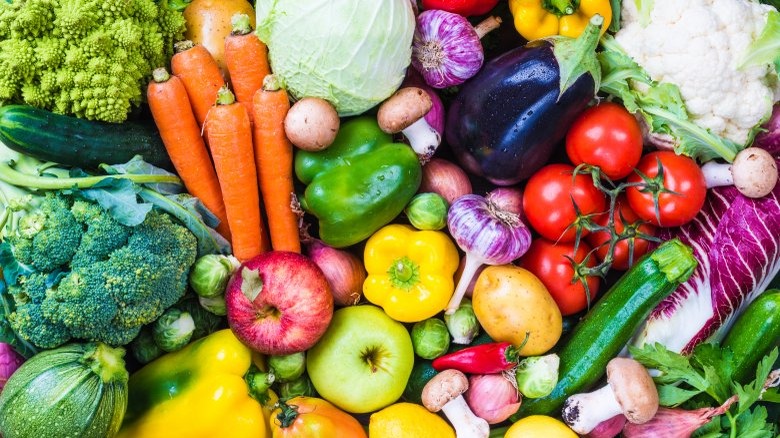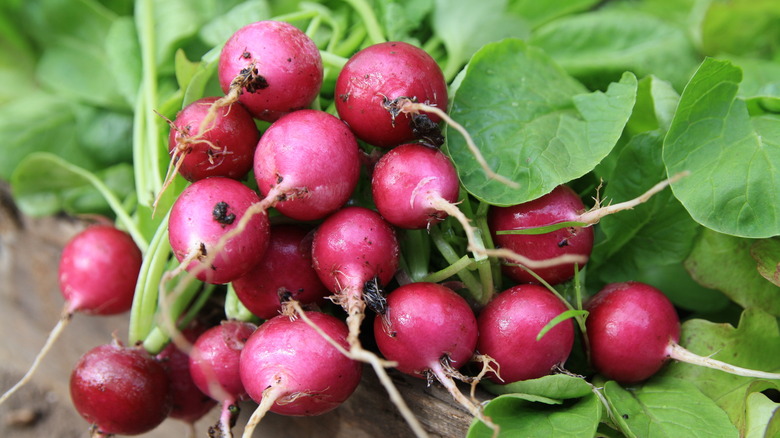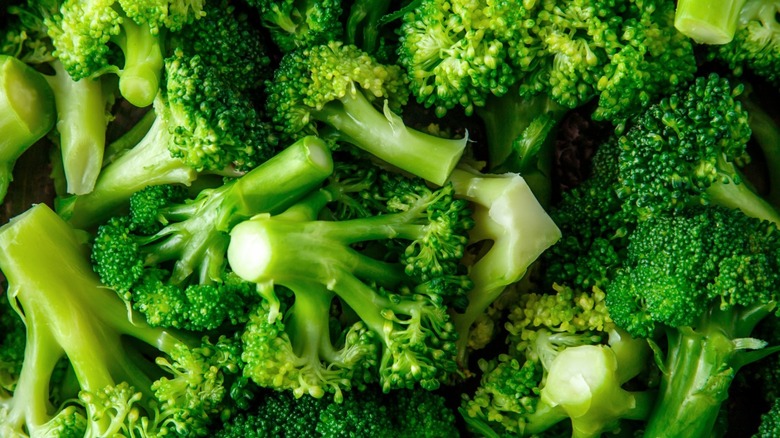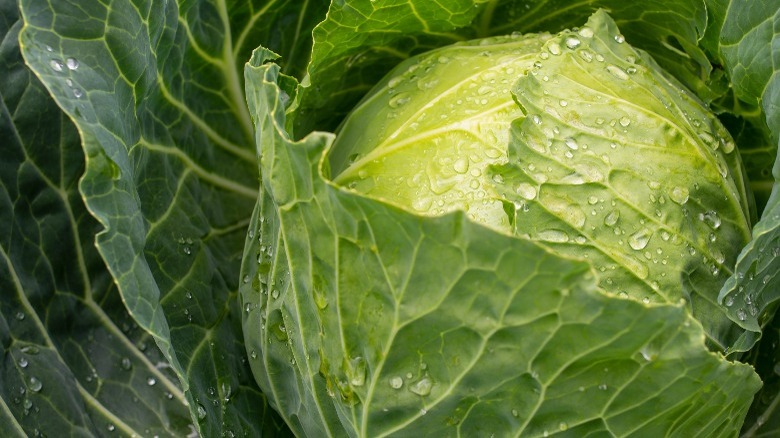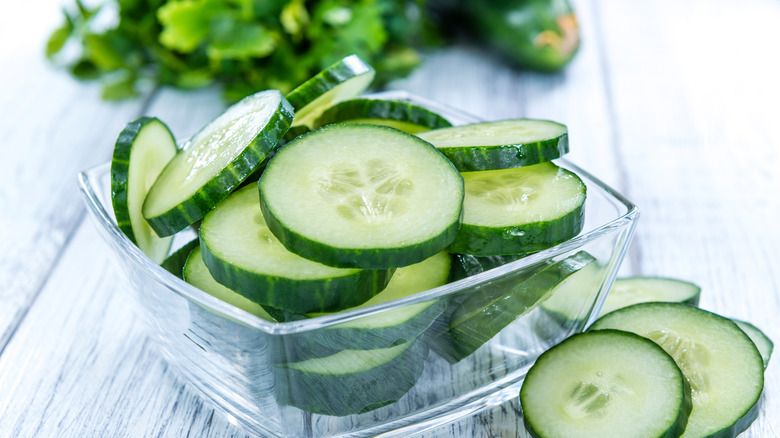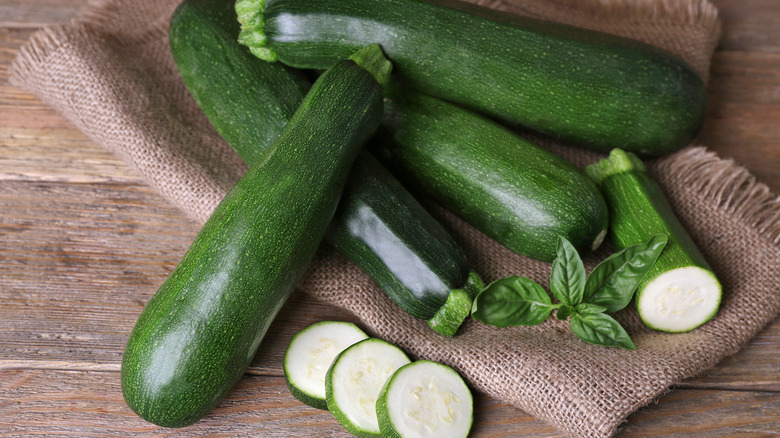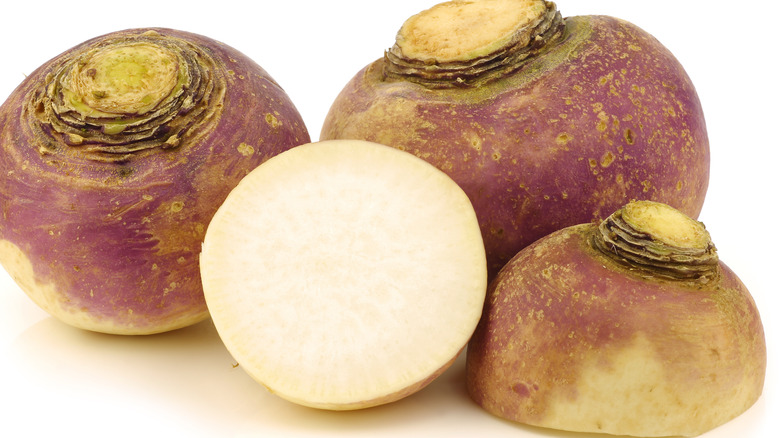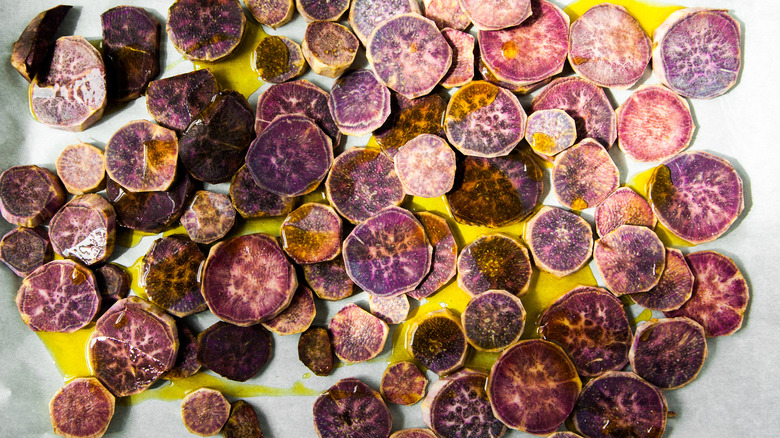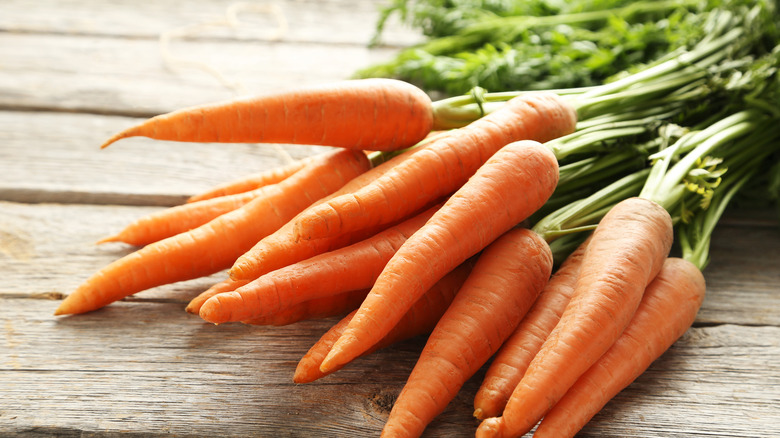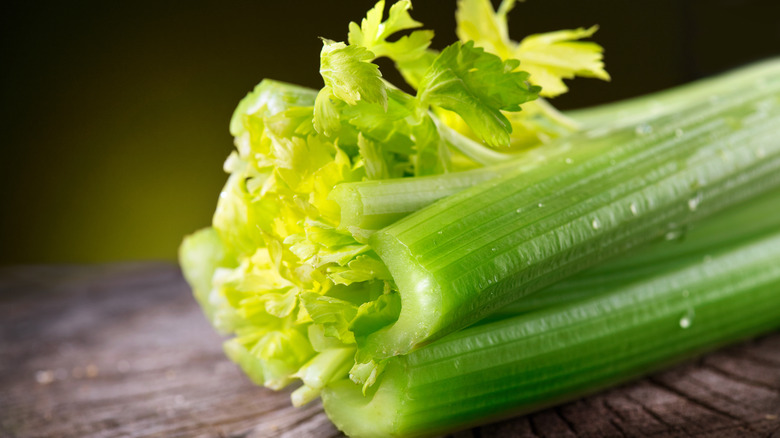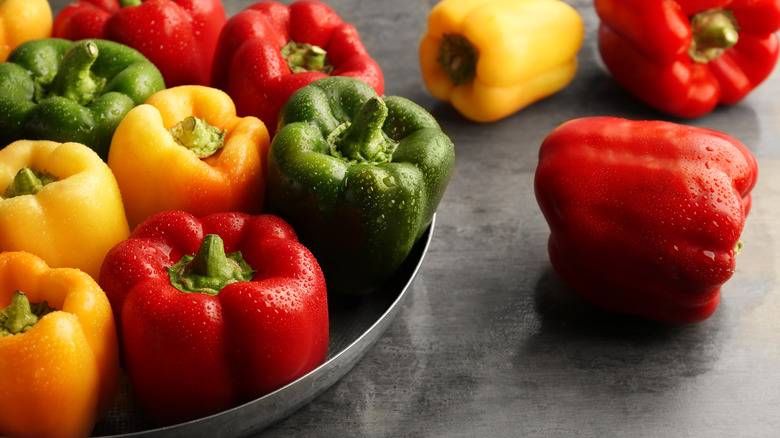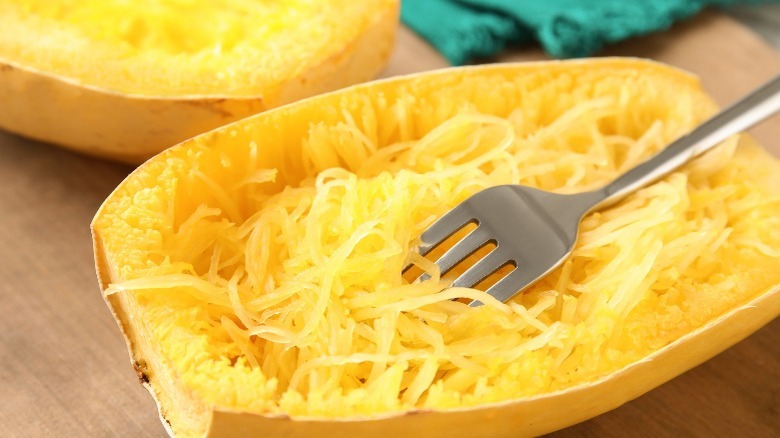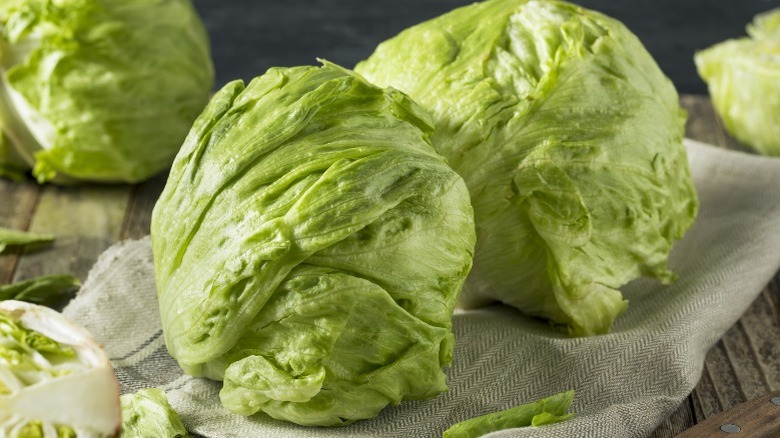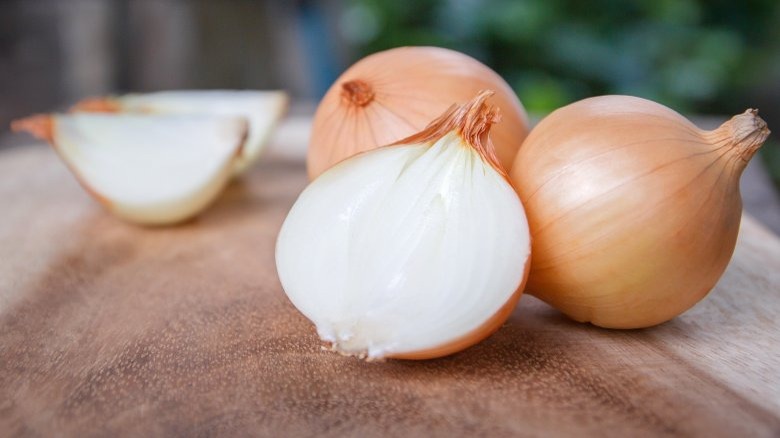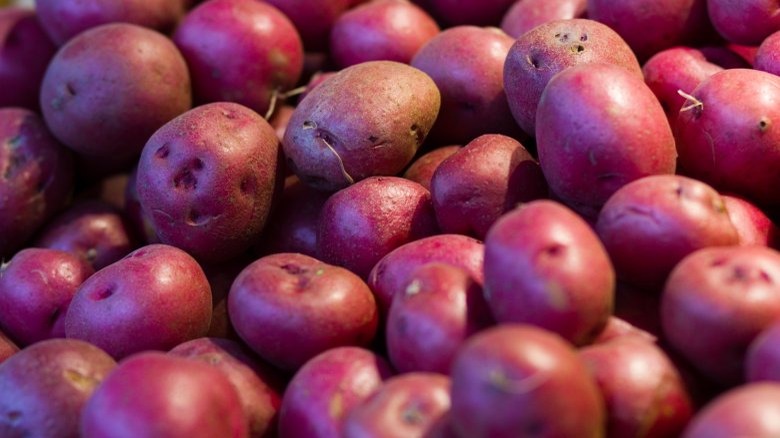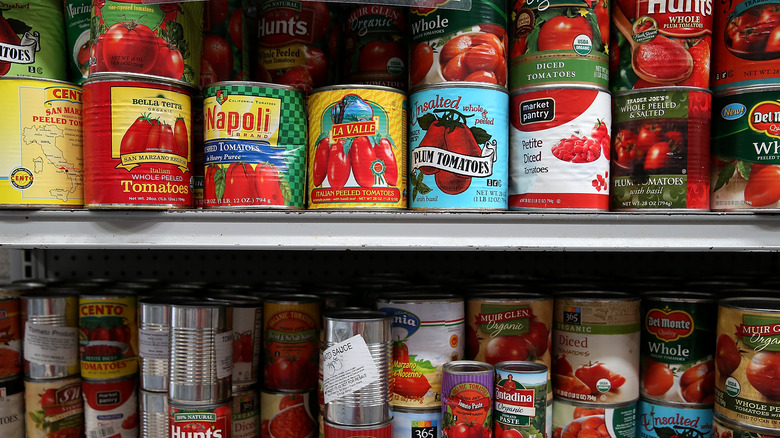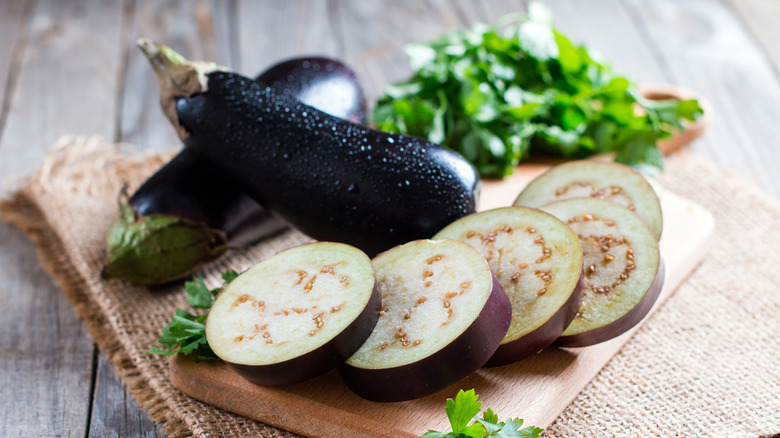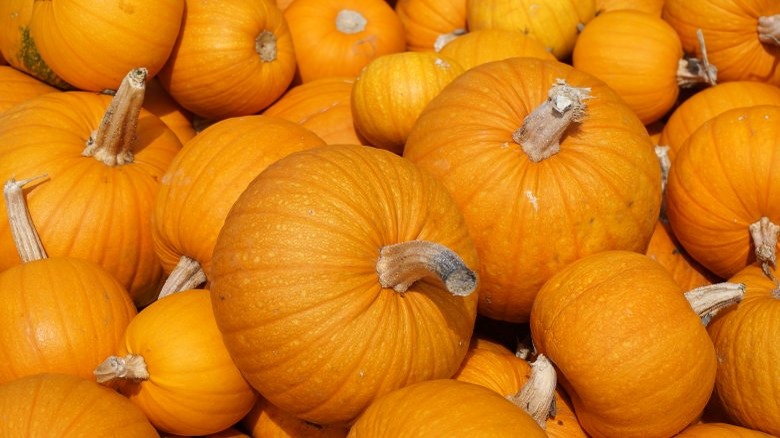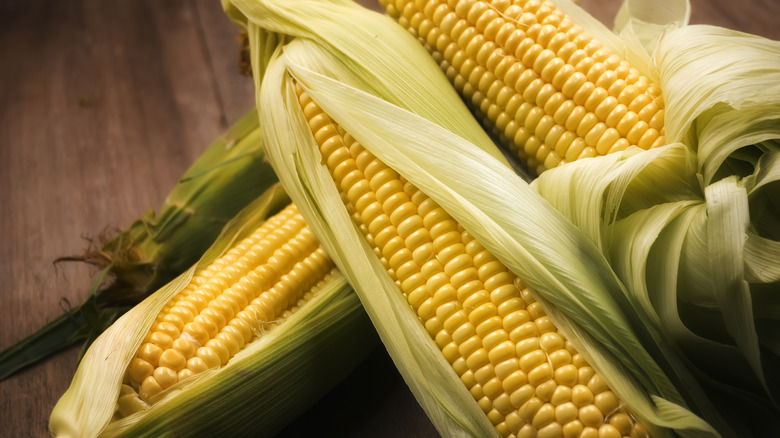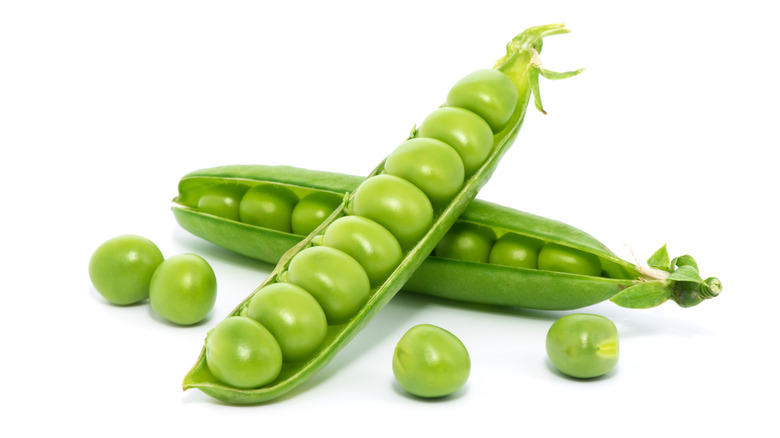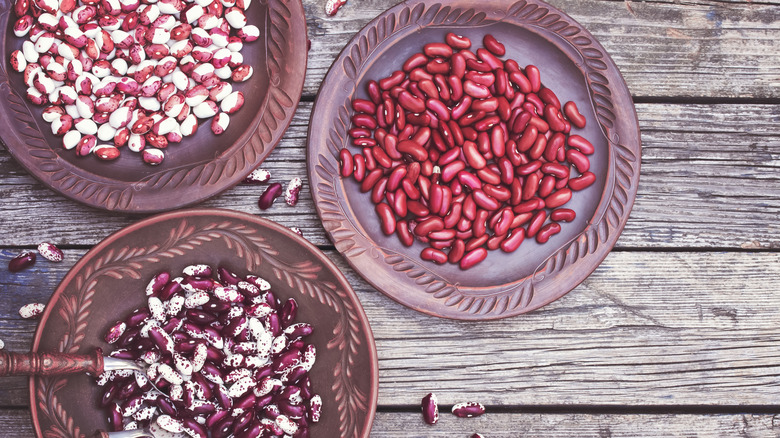10 Nutritious Vegetables, And 10 That Aren't As Beneficial As You Think
We may receive a commission on purchases made from links.
There are few foods whose nutritional halo shines bright as that of the nutrient-dense, calorie-scarce vegetable.
Vegetables' unquestioned status as a health food has existed for years. For generations, mothers have denied their children dessert before they finished their vegetables. Health fanatics shove vegetables into blenders to choke down the "delicious" green-colored, earth-tasting sludge. Nutritionists insist we eat a minimum of three to five servings of vegetables per day.
After years of vegetable glorification, we were surprised to learn that not all veggies are as healthy as we thought. In fact, there are a number of vegetables you might be better off avoiding altogether.
Of course, keep in mind that even the least healthy vegetables are likely to be superior to, say, a deep-fried Twinkie or mouthful of Cheese Whiz. But when deliberating between veggies, it helps to know which ones can deliver the most powerful nutritional impact — and which ones could be putting you at risk for gastrointestinal problems, tummy aches, and worse.
Do eat: Radishes
If you're looking for a veggie that's as tasty as it is nutritious, radishes will certainly not disappoint. Besides being juicy and full of flavor (either sweet or pungent, depending on the variety of radish), this root vegetable is extremely versatile, used in everything from salads to stews. Short on time? Give your radishes a quick slice and enjoy them raw for a super simple snack. "I like the peppery bite and nearly bitter taste of fresh radishes," Matt Bolus, executive chef at The 404 Kitchen in Nashville, told Mashed. "To balance those flavors I like to eat them with fresh ricotta cheese, honey, and olive oil."
They're high in fiber and low in calories and carbs, so go ahead and get your munch on.
Do eat: Broccoli
It may not wear a cape or leap tall buildings in a single bound, but broccoli is widely considered a superfood by nutritionists and medical professionals. As a cruciferous vegetable, broccoli is a valuable food in the effort to reduce inflammation. Sure, it may cause some intestinal discomfort when eaten in large quantities. But that doesn't negate the powerful combination of nutrients delivered in every serving. Adding 1 chopped cup of these tiny trees to your plate provides a healthy 135% of your recommended daily allowance of vitamin C (via Verywell Fit). There's also iron, protein, calcium, and potassium in the mix. With only 31 calories per serving, you're getting a mighty blast of nourishing good stuff delivered in every low-cal bite.
While fresh broccoli makes a nourishing add to salads and veggie trays, frozen broccoli may be preferable due to its flash-freezing process, which helps the vegetable retain more nutrients after leaving the field. This makes it handy to have broccoli on hand for soups, in roasted dishes, and as a stand-alone side dish. For maximum benefits, you can incorporate both fresh and frozen, and turn your dining regimen into a nutrition fest throughout the week.
Do eat: Cabbage
More than just holding space in the produce section as lettuce's smellier, tougher cousin, cabbage is a nutrient-dense vegetable that can add a stroke of good health and complex flavor to a variety of nourishing dishes. For being such a low-calorie food, the humble cabbage is incredibly nutrient dense. A cup of raw, chopped cabbage contains 22 calories and 5.2 grams of carbs. As Verywell Fit reports, "Half of cabbage's carbs come from fiber, making it a healthy food to help weight maintenance." You'll get vitamins C and K, folate, and potassium as well, all necessary nutrients for maintaining cellular health.
Incorporating cabbage into a healthy diet doesn't have to mean eating more salads, though that's certainly an option. Cabbage can be sliced into hearty steaks, brushed with olive oil and balsamic, and broiled for a tender main dish filled with caramelized flavor. It can also be added to soups and stews to lend its healthful personality to whatever else you have in the pot. And as a plant-based goodness double bonus, fermenting cabbage for dishes like kimchi ramps up existing nutrients and adds probiotics, providing a host of extra benefits for digestion and general good health.
Do eat: Cucumbers
Cucumbers are one of our favorite vegetables for a number of reasons. First off, you don't have to cook them (we're all about saving time). Secondly, they are extremely refreshing (try tossing a few slices in your water to switch things up). Finally, they make a good combination with just about anything — tuna, tomatoes, hummus, watermelon, you name it.
What's more, according to HuffPost, cucumbers are actually considered one of the healthiest vegetables. They're chock full of nutrients, including potassium, vitamin K, and flavonoids, which are anti-inflammatory substances, that may help in reducing the risk of certain cancers and cardiovascular disease. Did we mention cucumbers are also ridiculously easy to digest? Sounds like an all-around win to us.
Do eat: Zucchini
Like cucumbers, zucchini is also considered one of most easy-to-digest vegetables, which makes it a great choice for anyone who regularly experiences stomach woes. What's even better, they're just as easy to prepare, often requiring little no cooking at all. "Zucchini squash are so versatile raw," Brooklyn-based food writer and entrepreneur, Hetty McKinnon, told Mashed in an interview. "Shave them into ribbons to make 'zoodles' (zucchini noodles) or try my favorite preparation — teamed with pearl couscous and a creamy chili-lemon ricotta."
Do eat: Rutabaga
If you have yet to experience the deliciousness that is rutabaga, you're certainly missing out. Technically a cross between a cabbage and a turnip, this root veggie is crispy and juicy with a delightfully mild taste that makes it extremely versatile. "I like to mash rutabagas with a little milk and cream, just like potatoes, or add some chunks to mashed potatoes," food editor Faith Dunard wrote on The Kitchn. "They add color and flavor, and all on their own they mash up deliciously golden and colorful."
Rutabagas are easy on the gut, according to Chris Kresser, M.S., L.Ac,author of the New York Times best seller "Your Personal Paleo Code," because it's high in soluble fiber, but lower in insoluble fiber.
Do eat: Yams
Like rutabaga, yams are another gut-friendly food, according to Kresser, because of their high amounts soluble fiber. An added bonus: yams are also a fantastic source of vitamins C and B6. In fact, just one cup of yams provides nearly 20 percent of the daily requirement for each of these nutrients.
Do eat: Carrots
Carrots are one of those superstar vegetables that seem to be a hit with even the pickiest eaters. "Carrots are one of my favorite vegetables to grab for a quick snack," dietician and nutritionist McKel Hill shared on her website. "Crunchy, slightly sweet, and juicy, carrots are great to use in savory and sweet dishes."
Carrots are super versatile and can be eaten raw or cooked in anything from a smoothie to a soup or even a cake. Carrots are also a great source of vitamin B, vitamin C, vitamin D, beta carotene, olic acid, potassium, magnesium, and fiber. Like cucumbers, they can help clean the intestines, making them a great veggie choice for anyone who experiences regular constipation.
Do eat: Celery
If you're looking for ways to shed unwanted pounds, you may want to consider incorporating more celery into your diet. "Although science is still not sure if it takes more calories to digest celery than to eat it, this vegetable is great to eat raw if you're dieting," Maat van Uitert, author of "Organic By Choice: The (Secret) Rebel's Guide To Backyard Gardening," told Mashed. "It contains just 16 calories and can satisfy your need to snack if you're craving something to chew. It's packed with vitamin K, and might help lower your cholesterol."
Do eat: Bell peppers
Bell peppers are a flavorful, crispy vegetable that can be utilized in both raw and cooked formats. They're great diced raw in salads, and can serve as a vessel for stuffing and baking. And they're a key ingredient in sofrito, a flavor base for Caribbean cooking. Their flavor varies depending on their color, with green being cool and slightly bitter, and red being as sweet as it gets. And while they may appear to be separate from each other, they're all the same veggie; green is just unripe yellow, as yellow is just unripe red. To top it off, they're super good for you, as they're high in vitamin C and fiber. They even have a significant levels of potassium, magnesium, and a host of vitamins, so definitely eat up an enjoy.
Don't eat: Spaghetti squash
Spaghetti squash is a low-carb, plant-based substitute for actual spaghetti that's become a popular noodle stand-in for herbivores and carb-counters. Being a seemingly healthful substitute to use in your favorite pasta dishes doesn't make spaghetti squash the best selection from the veggie section, however. True, it brings a lot of nutrients, vitamins, and minerals to the table that are vital to a well-balanced diet. But it also comes with a potentially hazardous side effect.
Plants in the squash family produce cucurbitacin E., a chemical that helps the plants fend off insects. Most squash varieties have only small amounts of the chemical and are safe to eat, but too much of it can cause a dangerous side effect called cucurbit poisoning, or toxic squash syndrome, according to the website Simplemost. "Cross-pollination with wild plants as well as some type of stress during growth, such as lack of adequate water or poor fertilization, are some of the factors believed to cause increased cucurbitacin in squash and other produce," the website states. High concentrations of the chemical produce a bitter taste, another reason to skip the squash. Symptoms of cucurbit poisoning include abdominal pain, vomiting, diarrhea, and dizziness. Some victims have even experienced hair loss. In most cases, cucurbit poisoning runs its course like other types of food poisoning.
Don't eat: Iceberg lettuce
Seen in salad bars and school cafeterias, iceberg lettuce has long been considered a lesser option in the world of leafy greens. But if color denotes nutrient density, then iceberg's sickly pallor means you won't be finding the valuable vitamin content of darker greens here. The story that iceberg has zero nutritional value isn't entirely true, but it isn't the meanest green on the vegetable scene. The incredibly high 96% water content leaves little space for nutrients found in other leafy greens living right next door in the produce section.
Lack of nutrients notwithstanding, there's nothing offensive about iceberg, other than its bland personality. It's something of a gateway vegetable, helping people transition to a more vegetable-dense diet. The water content makes it a decent option for food-based hydration if you have nothing else in the crisper drawer, but there are far better ways to fulfill your daily water requirements. You're better off adding denser greens like spinach or kale to your shopping list, even as a mix in a power salad of their own. Those leaves come with a better nutritional profile and a higher nutrient content, in addition to providing better flavor than iceberg.
Don't eat: Onions
Love them or hate them, onions are tricky to avoid. In cuisines around the world, these crunchy bulbs are omnipresent in everything from burgers to bahn mi.
But if your stomach is on the sensitive side, you may want to proceed with caution around onions. Onions contain fructan, a carbohydrate well-known for causing mild to severe gastrointestinal problems. Onions, along with other allium veggies like leeks and shallots, can be difficult for your body to absorb and result in excessive water content in your intestine. As a result, chowing down on onions can bring bloating and discomfort.
For those who suffer from heartburn or gastric reflux, onions can aggravate heartburn — particularly if eaten raw. And if you're on blood-thinning drugs or you suffer from hemophilia or another blood-clotting disease, onions can prevent your blood from clotting the way it needs to.
On a nutritional level, you aren't losing too much by slicing onions out off your diet. Onions are primarily made of water, fiber, and carbs, so you can pack your nutrition in more effectively by reaching for spinach, carrots, or any of the other nutrition-dense veggies labelled "do eat" on this list.
Don't eat: Potatoes
It's hard to imagine eschewing the vegetable that gives us french fries, tater tots, and potatoes au gratin. In addition to being tasty and versatile, potatoes are cheap and widely available.
But, according to scientists at Harvard School of Health (who won't even call potatoes vegetables), they're high in carbohydrates — the kind your body digests quickly, which causes your blood sugar and insulin to sharply increase, then drop. Consuming one cup of spuds, then, has about the same effect on your blood sugar as a can of soda or a serving of jelly beans.
Those same Harvard scientists also linked potatoes to weight gain and diabetes, pointing to studies where people who ate more fries or baked or mashed potatoes put on pounds, while those who decreased their intake of these potato dishes trimmed down. They also noted that a similar study found frequent potato consumption resulted in higher diabetes risk among women.
There have been some studies that contradict that information though — a study published in Science Daily says potatoes (cooked without oil) may help reduce high blood pressure without causing weight gain.
Don't eat: Canned tomatoes
"Now hold on," you cry. "Tomatoes are a fruit." Well botanically speaking, you're right. But nutritionally speaking, the term "fruit" is used to indicate sweet produce often used in desserts, while the term "vegetables" is applied to low-fructose plants. So botanical fruits like tomatoes, eggplants, and pumpkins are classified as vegetables by nutritionists — and the good-looking writers at Mashed.
Moving on. Fresh tomatoes contain a ton of nutrients, including cancer-fighting antioxidants. But if most of the tomatoes you're eating come from a can, they might actually be doing the exact opposite. That's because some cans are made with a chemical called bisphenol-A (also known as BPA). This chemical, combined with the high acidity found in tomatoes, can actually be quite dangerous.
When it comes to tomatoes, fresh is definitely best and cooked may be even better, according to Uitert. "While tomatoes can be consumed raw, when cooked, it increases the amount of lycopene, an important phytonutrient that studies have shown to lower the risk of cancer and heart attacks," she explains. "When cooked, it becomes more bioavailable, allowing you to digest and absorb more of the powerful antioxidants."
Don't eat: Eggplant
Firm and hearty, the eggplant is often used as a meat substitute in kebabs, burgers, and stir-frys. Eggplants — aka aubergines — while tasty and filling, are not the healthiest vegetables (although, as we noted above, if we're speaking botanically, eggplant is actually a fruit).
For starters, eggplants are relatively lacking in protein and get a large portion of their calories from sugar. Beyond that, eggplants are a part of the nightshade family, a group of vegetables that include peppers, potatoes, tobacco, tomatoes, and tomatillos. Although these vegetables have been consumed over hundreds of years, they are associated with certain health problems due to their solanine content. Solanine is a bitter-tasting glycoalkaloid poison, naturally produced by plants as a defense mechanism against predators (predators like your eggplant Parmesan-cooking grandma, for example). In large amounts, solanine could cause gastrointestinal issues.
Eggplants also contain calcium oxalates, which could — in high quantities — encourage kidney stones. And finally, when served in certain types of dishes, eggplant's spongy texture allows it to soak up tons of fat and salt.
Don't eat: Fresh pumpkin
First, the good: Pumpkins are tasty and versatile, and they're packed with fiber, potassium, and vitamin C. For the most part, the danger of pumpkins doesn't lie in their nutritional content, but in the risks that accompany preparation. Thanks to their tough skin and unusual shape, pumpkins rank as one of the most dangerous vegetables (or if we're speaking botanically, fruits) to cut and prepare.
To investigate the perils of pumpkins, a group of scientists from SUNY Upstate Medical University in Syracuse performed a study with various kitchen knives, pumpkin knives, and cadaver hands. According to researchers, injuries like hand punctures and lacerations were common when pumpkin carving. The scientists suggest sticking to tools specially designed for pumpkin carving when preparing the fall vegetable to avoid serious injury — or better yet, leaving pumpkin slicing and dicing to professional chefs. If no professional chefs are around, you can always swap out pumpkins for similar veggies like sweet potatoes or carrots — or even better, grab some of the canned stuff. You'll get similar nutritional benefits without the risk of injury.
Don't eat: Corn
When it comes to quintessential American foods, corn is right behind apple pie and hamburgers. And the bright, yellow vegetable is not without its health benefits: Corn contains phytochemicals like lutein and zeaxanthin, which can help promote vision health. It's also full of nutrients like iron, potassium, and vitamin B.
But there are a number of reasons why you may want to limit your corn intake, particularly if weight loss is your goal. A Harvard study discovered that subjects who ate more corn tended to pack on pounds. The amount of weight gained from corn even exceeded the pounds put on from other starchy vegetables like potatoes and peas.
The reason corn consumption could spur weight gain has to do with its high glycemic index, which causes blood sugar to skyrocket. The spike in blood sugar can lead to cravings for unhealthy food — not unlike the spike that follows eating potatoes or a slice of white bread.
To top it all off, corn includes phytate, a phytonutrient that can prevent the absorption of zinc, iron, and selenium.
Don't eat: Peas
Remember that Harvard study we mentioned that found that starchy vegetables like corn and potatoes could lead to weight gain? Well, so can peas.
Like corn, peas have a high glycemic index and can cause spikes in blood sugar levels when consumed in excess. Also like corn, peas contain phytates that keep key nutrients from being absorbed.
As legumes, peas are high in protease inhibitors that can prevent proteins from being properly absorbed by the body. This may cause your body to overcompensate by producing excessive amounts of certain enzymes, which in turn can lead to problems like inflammation and allergic reactions.
Also like other legumes, peas are packed with FODMAPS (fermentable oligo-, di-, mono-saccharides and polyols). This group of carbs can case the bloating and discomfort. Green peas also contain lectins (though at lower levels than other legumes), which are associated with problems like inflammation and conditions like celiac disease, diabetes, and rheumatoid arthritis.
Don't eat: Raw beans
Beans — cooked, raw, or otherwise — are already under scrutiny from certain nutritionists for containing digestive problem-inducing FODMAPS. But when it comes to eating certain beans raw, the problem may be more serious.
A variety of these legumes, including broad beans, white kidney beans, and red kidney beans, naturally contain the phytohaemagglutinin toxin before they are cooked. Phytohaemagglutinin is a lectin that can cause gastroenteritis, a condition that may induce vomiting and nausea. Within a few hours of consuming raw kidney beans, diarrhea or abdominal pain may follow. Consuming as few as four uncooked, soaked beans can produce these symptoms.
To deactivate the toxic phytohaemagglutinin, you need to boil beans for ten minutes. It's critical that water be boiling, as lower temperatures can actually boost the toxicity in the beans. To be extra safe, you may want to soak beans overnight or a minimum of five hours before boiling to remove any stubborn toxins. Be sure to dispose of the water after soaking; do not use the same water you used for soaking to boil the beans.
